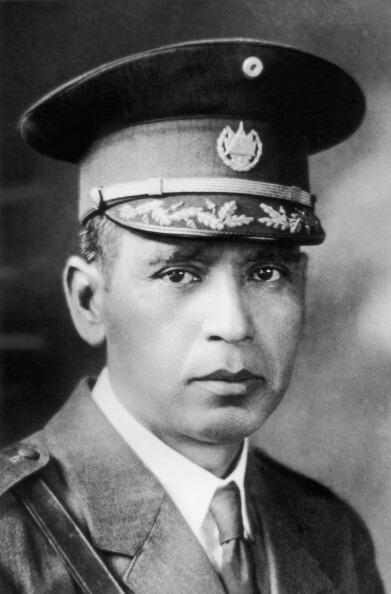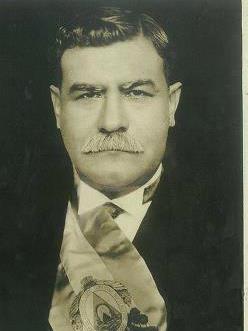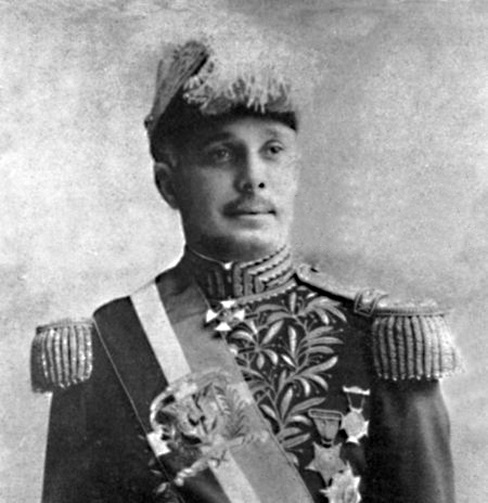Central American and Caribbean Dictators of TL-191
*Something I thought of. Lots of head canons. I apologize for not knowing enough Central American History to write more details.
Brief History
French map of the Federal Republic of Central America (Yellow Borders, before Chiapas became part of Mexico)
After the end of the War of Secession in 1862, there were a total of three attempts to reintroduce a Central American Union among the countries of Guatemala, El Salvador, Honduras, Nicaragua, and Costa Rica. Previously a part the First Mexican Empire forty years ago, the Central American countries declared independence and formed the United Provinces of Central America. The nation only lasted for less than twenty years until its dissolution in 1841. Some men, such as Francisco Morazán and William Walker, tried to reunify Central America, but ultimately failed or the reunion lasted temporarily.
The emergence of the Confederate States of America caught the attention of the Central American countries. With the strong alliance made between the Mexican Empire and the CSA, the rest of Central America wondered what fate their respective nations would be during their interaction with a slave-holding, agrarian nation with the diplomatic backing of Britain and France. During the last half of the 19th Century, the Caribbean and Central American region were under the strong influence of Britain, the CSA and to a small extent, Mexico. Out of all the nations of Central America, Costa Rica enjoyed political stability and a peaceful democracy.
When the First Great War occurred, the Central American nations were officially neutral. However, they were economically and diplomatically inclined to support the Entente Powers in North America, with the exception of Costa Rica who usually maintained stronger diplomatic relations with the USA. The Central Powers winning the war surprised the Central American nations and reevaluated their interests with the victorious USA, the defeated CSA and Mexico, the newly formed country of Belize, and the absence of British diplomacy in North America.
During the Interbellum years, the CSA tried to re-establish connections with the Caribbean and Central America, which had little success due to USA interference and preference. It wasn’t until Featherston’s election to the Confederate Presidency that the region began to gravitate toward the grip of the CSA, mostly through the help of Confederate-owned fruit companies since the 19th Century and Confederate-supported dictatorships in Central America and the Caribbean.
When the Second Great War began, the nations of Central America also declared neutrality and were likewise economically sympathetic to the CSA. The dictators of Central America at the time copied their government and policies similar to that of Featherston, albeit with a lack of racial genocide. The exception was Trujillo from the Dominican Republic, who contributed to the Population Reduction in Haiti. Their reigns were often noted for bringing in regional stability, industrialization, infrastructure and wealth to their respective countries, however, the money would always go primarily to the elite, never being used to help the poorest of the poor.
At the end of the Second Great War, it was revealed that many Confederate businesses and businessmen in Central America were heavily involved in Featherston’s Confederacy. Under the banner of Defreedomitization, many of these companies and their CEO’s were shut down and arrested for their Freedomite connections, including government officials from nearly every Central American nation. What was left in Central America was a power vacuum that the USA or Mexico sought to exploit and control.
Guatemala
Jorge Ubico Castañeda (President of Guatemala: February 14, 1931 – October 19, 1944)
Known as "Central America's Napoleon", Ubico had financial connections with the Confederate Citrus Fruit Company, initially a shell company that dealt with secret military C.S. planes, but he made it into a more legitimate business, alongside Valentine Bros. News of the Population Reduction and the people of Guatemala no longer being able to tolerate Ubico's excess rule helped add momentum to the Guatemalan Revolution in October of 1944. He was hounded by the revolutionary mob, beaten, and hanged to death. He was never tried for his connections to the Freedomites.
El Salvador
Maximiliano Hernández Martínez (President of El Salvador: March 1, 1935 – May 1, 1944)
Hernández Martínez was known for his killing of Salvadoran Socialists during reign. Although not directly involved with the Freedomites, the land-owning oligarchs had some connections with the C.S. government before Featherston's rise to power and after it. Hernández Martínez would eventually be overthrown during a putsch and killed on May Day in 1944.
Honduras
Tiburcio Carías Andino (President of Nicaragua: February 1, 1933 – January 1, 1949)
The least affected by Featherston, Carías Andino nevertheless ruled Nicaragua as a strong, military leader. He was brought to national attention when it was discovered that former Freedomites were living in his country, causing a scandal that forced him to resign his presidency and live out the rest of his life in seclusion until 1969.
Nicaragua
Anastasio Somoza García (President of Nicaragua: January 1, 1937 – May 5, 1945)
Similar to Carías Andino, former Freedomites were found to be living in his country after the end of the Second Great War. However, Somoza García was actively involved in smuggling in Freedomites and giving them citizenship and other types of government help since 1943. The United States demanded the lives of the Freedomites and for the president to resign. Somoza García was found dead in his office with his throat completely cut open to the point that only his vertebrae remained connected between his head and neck. The killer was never found but the prevailing theory is that his death was done by the U.S. government.
Dominican Republic
Rafael Trujillo (President of the Domincan Republic: August 16, 1930- January 1, 1945)
Often called the "Caribbean Featherston", Trujillo was the most active in his support for Featherston's Confederacy. Already prejudiced against Haitians, Trujillo gained the attention of Featherston when he perpetrated the Parsley Massacre in 1937 against Haitians in the Dominican Republic. During Operation Blackbeard, Trujillo invaded Haiti from the east, while the Confederates invaded from the west. In less than a day, Haiti was completely conquered and both Confederate and Dominican forces indiscriminately killed every black-skinned person they could find. Once Haiti was liberated, the Dominican Republic was invaded by U.S. forces, occupied, and Trujillo was captured. He was later put on trial for crimes against humanity and executed by firing squad at midnight on the first day of 1945.






